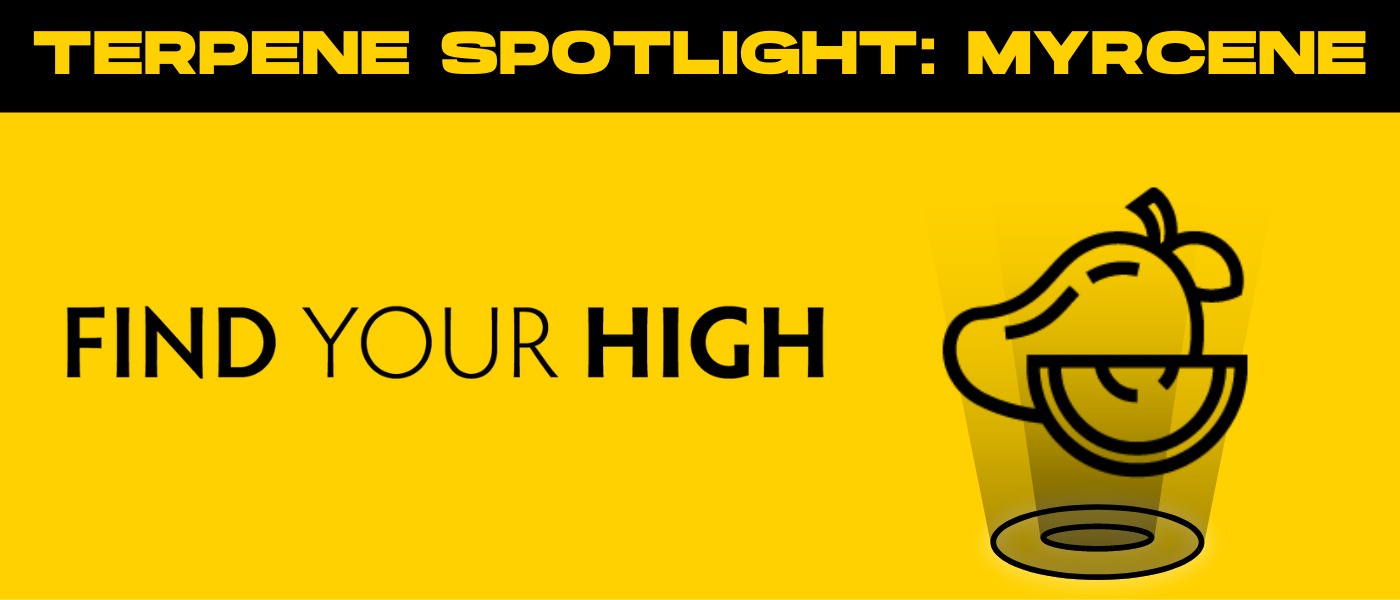Ahh terpenes: The latest and greatest buzzword in the world of weed. While numerous other terpenes grab the attention of cannabis connoisseurs everywhere, very few measure up to the most abundant terpene — myrcene terpene.
But what makes myrcene so great? In this blog, we’re taking a deep dive into cannabis’s favorite compound. From flavor and fragrance to health benefits and overall impact, keep reading for a deep dive into the molecule that is myrcene.
What is a Terpene?
Terpenes are considered to be safe, naturally occurring chemical compounds found in plants. To be more scientific, terpenes are a group of volatile compounds found within the essential oils of plants. And to be more specific to cannabis, terpenes exist in the trichomes of female marijuana plants.
Despite being a common buzzword in the cannabis industry, terpenes are found in the essential oils of all plants. And while we stoners highly regard terpenes for their numerous health benefits, terpenes are most commonly praised for their influence over the flavor and aroma of a plant.
Examples of common cannabis terpenes include caryophyllene, linalool, ocimene, limonene, and our topic of discussion today — myrcene.
Myrcene Terpenes and the Entourage Effect
If you’re already familiar with Terpenes 101, then you’ve likely heard of the ‘entourage effect.’
The entourage effect is the union of terpenes & THC working in concert to create the magic of cannabis.
In other words, the entourage effect is a theory that cannabinoids aren’t the only chemical compounds with influence. Instead, terpenes work with other cannabinoids to create the high we all know and love. A synergistic effect, if you will.
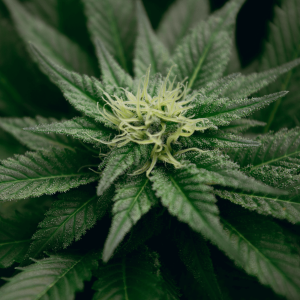
Myrcene, for example, works with other cannabinoids such as CBD, THC, and CBN to offer potential therapeutic benefits that contribute to its popularity. Though it’s important to further clarify that myrcene alone does not produce psychoactive effects.
What are the Effects of Myrcene?
Not only is myrcene, also called beta myrcene or β myrcene, the most abundant terpene in cannabis strains, but it’s arguably the most popular. With so much hype around the abundant terpene, plenty of myrcene research has been conducted in recent years to determine its therapeutic effects.
β myrcene doesn’t produce any psychoactive effects and can’t get stoners high in the traditional sense, but it does have other therapeutic benefits, such as:
- Anti-inflammatory properties
- Pain relieving properties
- Sedative effects
- Enhanced mood
- Stress relief
- Immune boosting effects
…the list goes on.
However, the health benefits don’t stop there. Many researchers go so far as to say that β myrcene may have a positive impact on serious health conditions and numerous diseases, such as:
- Cancer
- Convulsions
- Chronic pain
Myrcene may also inhibit disease progression; however, it’s important to note that these findings were concluded from numerous animal studies. More myrcene research is needed to fully understand its effect on humans, especially in high concentrations.
Myrcene in Herbal Medicine
Herbal medicine explores the therapeutic properties of plants. People who practice herbalism, such as traditional doctors who resonate with the Eastern medicine approach to healthcare, create remedies and herbal medicines from plants, such as cannabis.
As the war between Western and Eastern medicine rages on (not in the literal sense, of course), many stoners may approach their own personal healthcare through the use of Chinese herbal medicine and cannabis.
It’s this very approach that inspired the widespread legalization of medical marijuana across the United States and ended marijuana prohibition with California’s Compassionate Use Act in 1996.
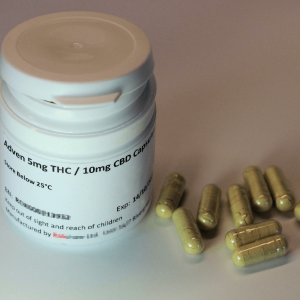
With that being said, many cannabis experts who use marijuana as medicine choose their cannabis strains based solely on the terpene profile. And more specifically, those same experts often search for large quantities of myrcene.
Investigating Myrcene in Herbal Medicine
β myrcene is nothing new. Named after a medicinal shrub known as Myrcia Sphaerocarpa, myrcene has long been used to treat a variety of conditions and ailments. In fact, its first recorded use was over 2,000 years ago in India.
For hundreds of years, Chinese medicine, and Eastern medicine as a whole, has put good use to the physical and chemical properties of beta myrcene. Outside of animal studies, terpene has been used to reduce inflammation, treat respiratory problems, and inhibit disease progression.
While no concrete evidence in the world of Western medicine necessarily confirms the use of myrcene for the conditions mentioned above, the medical world also doesn’t deny its potential health benefits.
Investigating Myrcene in Folk Medicine
Folk medicine is defined by Merriam-Webster as traditional medicine practiced especially by people isolated from modern medical services and usually involving the use of plant-derived remedies.
However, folk medicine is more commonly described as a traditional approach to medicine that has developed over generations, housed within folk beliefs formed before the era of modern medicine.
Beta myrcene is often used in folk medicine. For example, Brazilian folk medicine suggests lemongrass tea to treat various conditions. Lemongrass tea contains high levels of myrcene, and the same can be said about lemongrass essential oil.
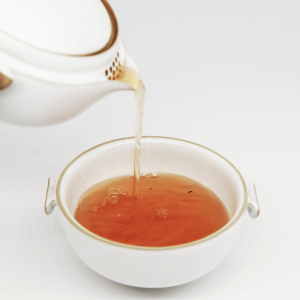
In Brazil, lemongrass tea has been used to reduce inflammation that leads to pain. It has also been used to relieve anxiety. In Mexico, people often rely on lemongrass tea to act as a muscle relaxant while simultaneously improving sleep.
In Germany, people use myrcene-rich hops combined with valerian root to create herbal sleep aids that are high in myrcene.
The Flavor & Aroma Profile of Myrcene Terpenes
Cannabis experts who study terpenes can often identify the terpene profile of cannabis strains based on the flavor profile and aromatics alone.
After all, terpenes play the biggest role in not only defining a consumer’s experience (queue the entourage effect), but in the taste and smell of all cannabis strains.
But to better understand both the flavor profile and aroma profile of β myrcene, it’s imperative that we take a closer look at both.
What does myrcene taste like?
Unfortunately, the verdict is still out in regard to the flavor of β myrcene.
Some stoners claim that myrcene has a flavor profile that reminds them of a ripe mango.

However, that could be due to the fact that mangoes contain high levels of myrcene, which increases the permeability of the blood-brain barrier.
This weakened blood-brain barrier is said to improve the absorption of cannabinoids into the brain. In fact, many cannabis connoisseurs swear by the theory that consuming a ripe mango prior to smoking may enhance the overall high.
This common association between mangoes and myrcene may influence people’s perception of the flavor profile of myrcene, as well.
Other cannabis experts claim that myrcene is earthy or peppery in flavor. This can likely be attributed to the fact that myrcene terpenes exist in the essential oils of plants such as cardamom, basil, lemongrass essential oil, and hop essential oil.
However, both the stoners who claim sweetness and the stoners who claim an earthy flavor agree that myrcene has an overall spicy taste.
What does myrcene smell like?
β myrcene is best known for its earthy scent.
However, along with its earthy scent, many cannabis experts pick up on a pleasant aroma of fruitiness with a clove-like undertone.
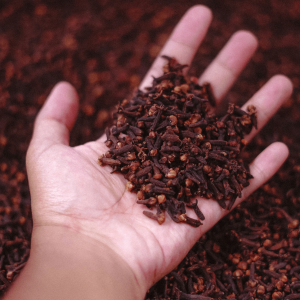
As with other terpenes, the earthy aroma of myrcene, and any essential oil containing myrcene, is more pungent when high in myrcene.
Sources of Myrcene
So far, we’ve discussed what myrcene is, its effects, and its source.
At this point, we’re likely all on the same page in the understanding that myrcene, like all other terpenes, comes from plants. In fact, some of the most common plants (some of which you may grow yourself or consume on a daily basis) contain terpenes.
Plants That Contain Myrcene
Despite being the smallest compared to other terpenes, myrcene is the most abundant terpene. Aside from the cannabis plant, high levels of myrcene are found in a variety of plants, including:
- Sweet basil
- Ylang ylang
- Bay leaves
- Parsley
- Wild thyme
- Lemongrass
- Eucalyptus
- Hops
- Mangoes
- Citrus fruits
However, it’s no secret that a stoner’s true interest in β myrcene lies solely in the cannabis plant.
After all, we regularly turn to cannabis strains for their sedative effects, anti-inflammatory properties, and their ability to act as muscle relaxants.
And if we’re being entirely honest, we simply just love the high that cannabis strains offer.
But which cannabis strains are high in myrcene? Keep reading to find out.
Which Cannabis Strains Have the Most Myrcene?
It’s no coincidence that some of our favorite strains are high in myrcene. In fact, many of the cannabis industry’s most popular cultivars are cannabis strains high in myrcene.
Whether it’s the flavor, aroma, effects, or potentially increased psychoactivity that piques a consumer’s interest, one fact remains: Cannabis strains high in myrcene tend to outperform in the world of weed.

But which strains have the highest β myrcene content? Before we dive into the specifics, let’s take a moment to analyze the myrcene levels in both indica strains and Sativa strains.
Are the myrcene levels different? The same? Keep reading to find out.
Myrcene Levels in Sativas vs. Indicas
Myrcene alone isn’t classified as either an indica or a sativa. In fact, myrcene is not a marijuana strain but a terpene found within the trichomes of cannabis plants. While terpenes like myrcene do not have psychoactive effects on their own, they work with cannabinoids like THC and THCa to create a synergistic effect known as the entourage effect.
However, some research suggests that higher concentrations of β-myrcene are more commonly found in one strain classification over another.
Let’s explore how this terpene influences the cannabis experience!
Sativas
When asked to describe a cannabis sativa strain, what descriptive adjectives come to mind?
Maybe your mind immediately jumps to their energizing effects. Or maybe your mind thinks of how uplifting sativa strains tend to be.
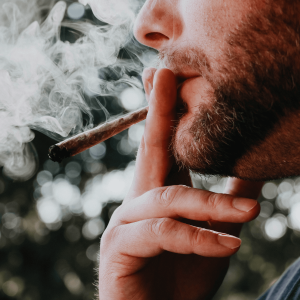
In general, stoners and cannabis connoisseurs alike agree that sativa strains often offer energizing, creative, elevating, and euphoric highs — effects not commonly associated with the myrcene terpene.
Though sativa strains could very well contain myrcene within their list of dominant terpenes, myrcene content tends to be higher in Indica strains.
Indicas
When describing indica strains, our minds often drift towards descriptions centered around relaxation. Blissful, Calming, Chill, and Sedating — just to name a few.
Given that β myrcene is known to promote more calming effects, such as reducing inflammation and muscle relaxant properties, many stoners and cannabis experts associate myrcene with the indica classification. And for great reason!
More often than not, strains high in myrcene tend to be classified as indica strains. According to multiple sources, cannabis strains with a myrcene content greater than 0.5% in the volume are considered to be indica strains.
On the other hand, cannabis strains with a myrcene content lesser than 0.5% in volume are considered to be sativa strains.
However, it’s important to note that the classifications mentioned above don’t always ring true. In fact, most of the following strains actually feature hybrid or sativa effects, despite high concentrations of myrcene.
Cannabis Strains High in Myrcene
Myrcene represents over 20% of the terpene profiles of most modern commercial strains. A few examples of strains include Slurty, LA Pop Rocks, and Purple Runtz.
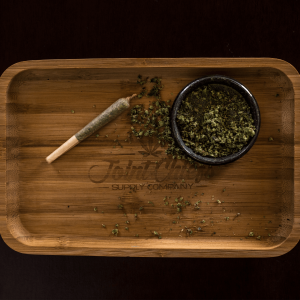
And while it’s true that myrcene is the most abundant terpene found within the cannabis plant, the following strains see higher amounts of myrcene compared to other strains.
OG Kush
As its name suggests, OG Kush is the true OG of the cannabis world. Stoners keep OG Kush circulating in their weed stash for its earthy aroma, dank flavor profile, and hybrid effects that typically result in a balance between dreamy euphoria and deep relaxation.
Unsurprisingly, OG Kush typically contains a higher concentration of myrcene within its terpene profile.
With that being said, myrcene may play a role in the potent effects synonymous with the classic hybrid strain. For example, OG Kush is widely known for its anti-inflammatory activity, a characteristic that can likely be attributed to its β myrcene terpene content.
Blue Dream
Blue Dream is another staple strain within the weed industry.
Similar to OG Kush, Blue Dream is a hybrid strain that lists myrcene within its top three dominant terpenes. However, Blue Dream has typically known for its creative, uplifting, and energetic high — effects that aren’t typically used to describe strains high in myrcene. So how could myrcene play such an influential role in Blue Dream?
While Blue Dream does typically produce a cerebrally invigorating high, it’s also a strain well-known for its relaxing effects that spread throughout the body from head to toe. Given that myrcene is known for its presence within relaxing strains, myrcene may play a role in Blue Dream’s relaxing qualities.
Additionally, Blue Dream features an earthy aroma and flavor profile, similar to that of many other strains with terpene profiles that contain higher amounts of myrcene.
Finally, many stoners turn to Blue Dream for a range of health benefits and medicinal properties, such as anti-inflammatory effects to treat conditions such as chronic pain and nausea.
Tangie
Tangie is the only marijuana strain on our list that typically tests as entirely sativa. Similar to Blue Dream, Tangie is best known for its energetic, uplifting, and talkative effects. However, these effects aren’t usually attributed to strains high in β myrcene.
And yet… Tangie places among our top 5 strains high in myrcene thanks to its numerous health benefits and euphoric yet relaxed high that’s very apparent, especially in high doses.
Given that myrcene is the most abundant terpene within Tangie’s terpene profile, it’s no surprise that this beloved marijuana strain is a popular choice among those searching for heavy effects and an influential terpene profile.
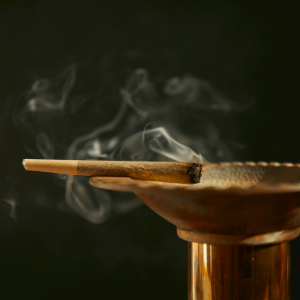
Jillybean
Another hybrid strain featured on our list, Jillybean is best known for its euphoric and uplifted effects.
Its flavor profile is definitely on the fruitier side, featuring notes of orange, mango, and citrus.
The terpene content of Jillybean is relatively diverse. While β myrcene is the most dominant terpene found within Jillybean, both caryophyllene and pinene are present as well.
High doses of Jillybean often help stoners battling ailments such as stress, depression, and anxiety. However, many recreational cannabis users turn to Jillybean when they’re craving an extra happy high.
Purple Urkle
And finally, we’ve reached Purple Urkle, the last strain on our list with a heavy concentration of myrcene.
It may come as a surprise that Purple Urkle is the only entirely indica strain on our list, especially given that myrcene may promote relaxation or even a sedative effect. Nonetheless, Purple Urkle makes an appearance as not only a strain high in myrcene but one that features the same relaxing properties one would expect from myrcene terpenes.
Purple Urkle is a phenotype of Mendocino Purps. Phenotypes are from the same cultivar but differ in various physical attributes such as color, shape, smell, and harvest yield.
Taking its genetics into account, many cannabis connoisseurs swear by their nightly dose of Purple Urkle. This makes it one of the industry’s favorite strains for relaxation. Many stoners spark up Purple Urkle to combat sleep ailments, such as insomnia, thanks to this strain’s sedative effect and deeply relaxing qualities.
Why is myrcene so popular?
Whether found in essential oils, soaps, detergents, or our favorite cannabis plants, myrcene is an ever-abundant chemical compound.
Its popularity in the weed scene is only growing as more cannabis connoisseurs discover the power of myrcene, especially in high doses.

A few reasons myrcene may have garnered such extreme popularity include:
- Anti-inflammatory effects
- Anti-cancer
- Antioxidant
- Pain relief
- Sedative effects
- Anticonvulsant
And the list of benefits is only growing as scientists discover more medicinal properties associated with myrcene.
But that’s not all! Myrcene has been a popular medicinal ingredient for centuries, and our modern take on myrcene terpene may only further validate its traditional uses.
FAQs
1. Is myrcene an indica or sativa?
Myrcene is not a cannabis strain. Instead, myrcene is a terpene. Terpenes are naturally occurring chemical compounds found in the trichomes of female cannabis plants. They’re largely responsible for a strain’s aroma and are believed to play a role in its effects.
Since terpenes are non-psychoactive and only part of the whole cannabis plant, they aren’t classified by indica or sativa.
2. How does myrcene make you higher?
Myrcene alone is not responsible for getting consumers high; however, it’s widely believed that myrcene enhances a cannabis strain’s psychoactivity. For example, many stoners eat a ripe mango prior to taking a hit. This is because mangos contain a high percentage of myrcene.
Additionally, myrcene, along with every other terpene, is believed to work with various cannabinoids to create a cannabis high. For example, myrcene may work with THC to create a relaxing high.
3. Is myrcene good for anxiety?
When combined with cannabinoids such as THC, myrcene may produce a sedative high. These relaxing, sleepy, and calming effects make myrcene an excellent choice of terpene for combating anxiety. However, caryophyllene is typically the terpene of choice for treating anxiety in medical marijuana patients.

 Rewards
Rewards



